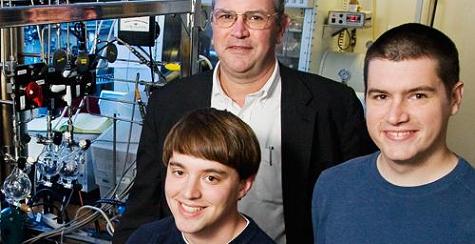By mimicking the active site found in a natural enzyme, University of Illinois researchers describe a catalyst that acts like nature's most efficient hydrogen "factory"

By mimicking the active site found in a natural enzyme, researchers from the University of Illinois describe a catalyst that acts like the most efficient hydrogen "factory" in nature.
Scientists have long marveled at nature's ability to use an abundance of cheap building blocks - iron, nickel and sulfur - to achieve catalytic performance that can only be obtained with rare and expensive materials. In particular, two enzymes: iron-iron hydrogenase and nickel-iron hydrogenase function as hydrogen factories, similar to platinum metal.
"Nature relies on highly sophisticated structures for self-support in its hydrogen economy," explains Thomas B. Rauchfuss, professor of chemistry and lead author of the paper. "We cracked this design by creating mimics of the catalytic site that includes the hydrogen atom as its substrate."
The researchers' imitation of the nickel-iron coupling is the first to include a bridging hydride ligand, an essential key component of the catalyst.
"By better understanding the mechanism of activity of the active site in the enzyme nickel-iron hydrogenase, we learn how to develop new types of synthetic catalysts that could be useful in other applications," explains one of the researchers.
"The study of hydrogenase enzymes provides a wealth of potential information - such as that for the hydrogen economy, green energy and bio-fuel cells - however, the latest breakthroughs originate from upgraded mechanical simulations like ours," explains the researcher. "By creating a mimic containing a hydride ligand, we proved that it is possible to understand and improve the behavior of these natural catalysts."

3 תגובות
The article is very short - was it not possible to go into more detail about the structure of the enzyme, for example? Or about the chemical catalyst?
:) and Thomas?: 'as' the 'Tom'.
If it is an imitation, then let it be faithful to the source of truth = in 'Tom'.
People's last names are sometimes very amusing.
Rauchfus, for example, is "foot of smoke"